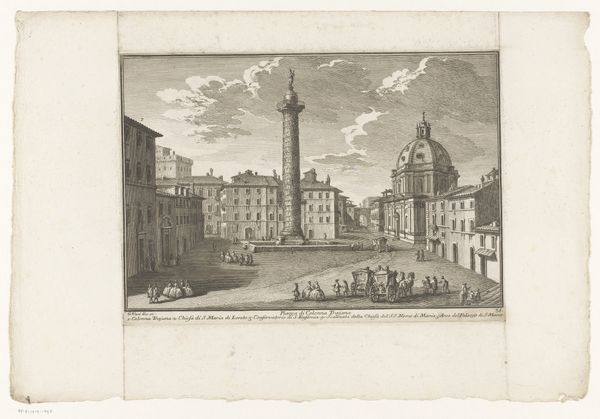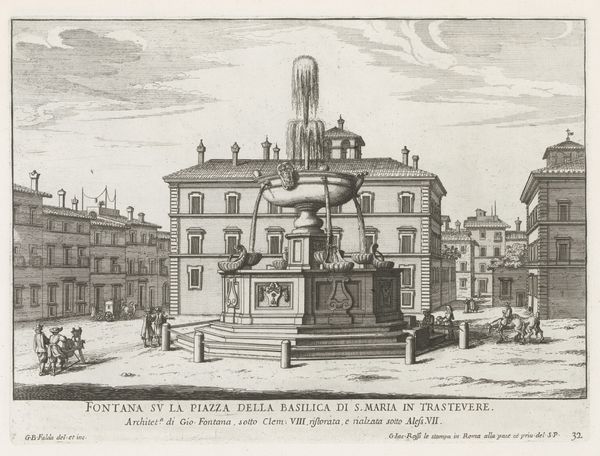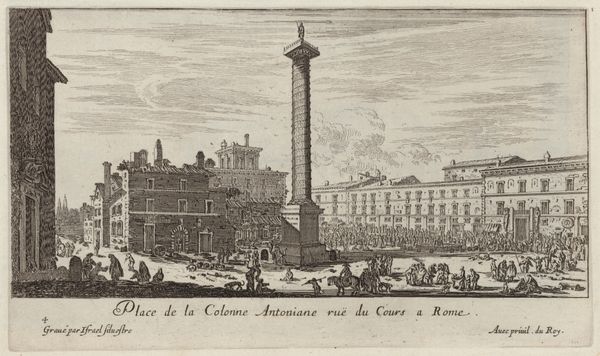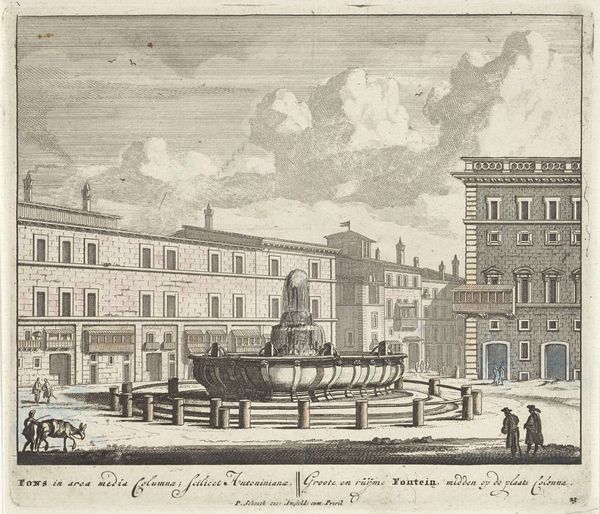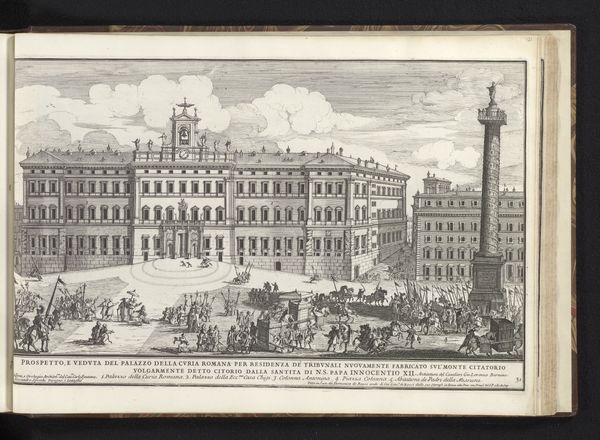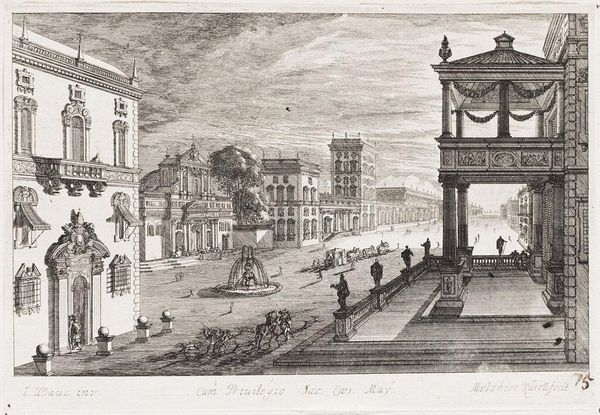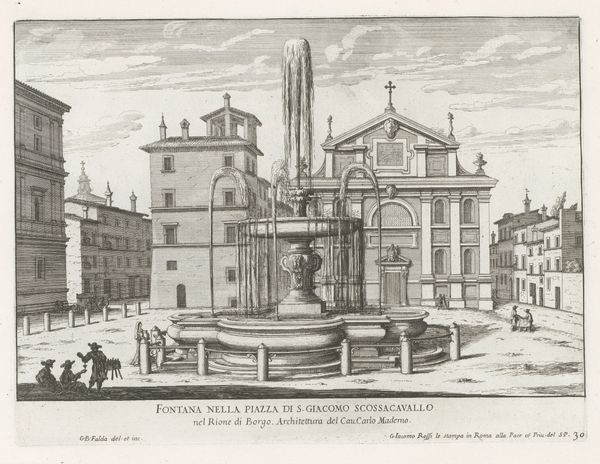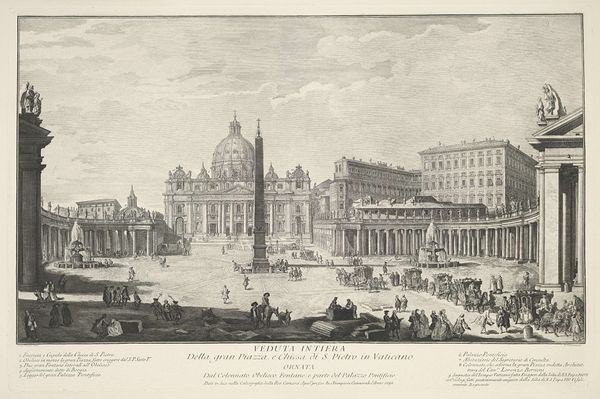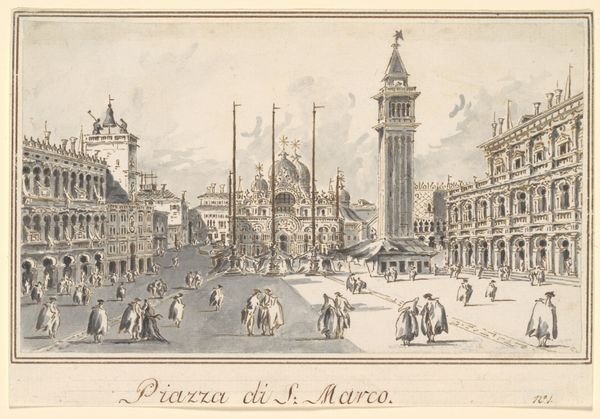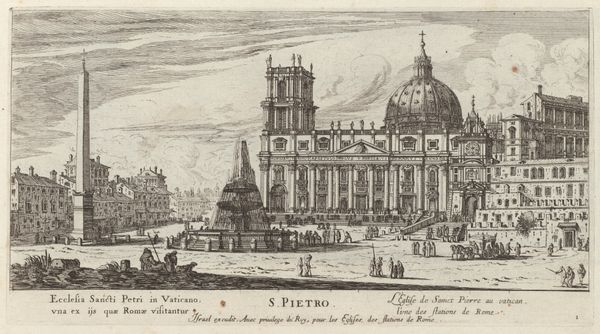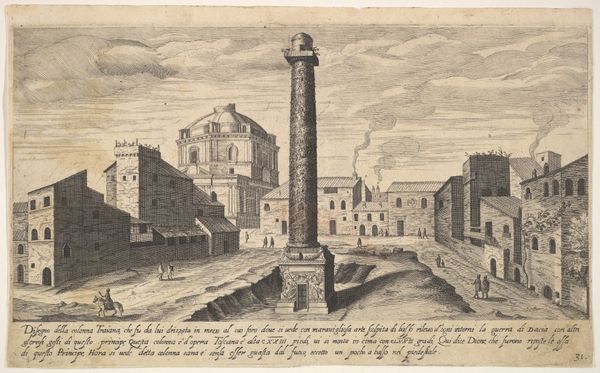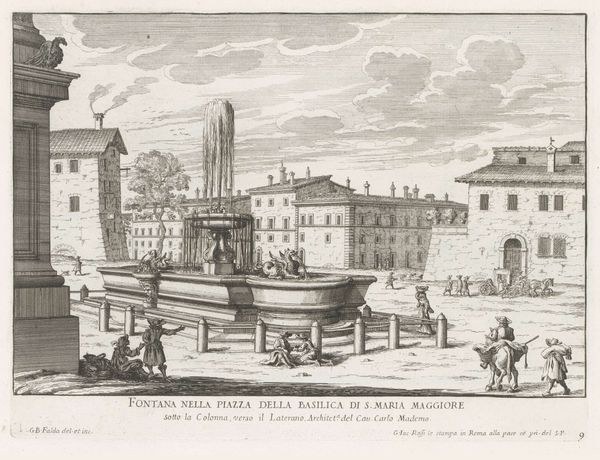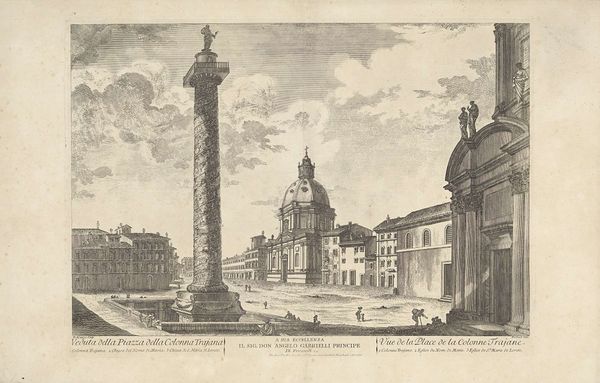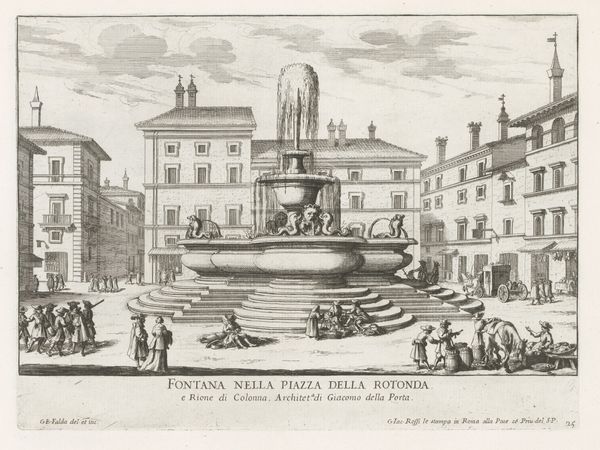
print, engraving
#
baroque
# print
#
landscape
#
perspective
#
cityscape
#
italian-renaissance
#
engraving
Dimensions: plate: 11.6 × 20 cm (4 9/16 × 7 7/8 in.) sheet: 21.1 × 33 cm (8 5/16 × 13 in.)
Copyright: National Gallery of Art: CC0 1.0
Curator: Welcome. Today, we'll be discussing Israel Silvestre's "Piazza della Colona Trojana," an engraving likely created between 1640 and 1660. Editor: My initial response is one of ordered serenity. The precise lines create a structured vista, drawing the eye back into space, anchored by the titular column and the dome on the right. It almost feels like stagecraft. Curator: Silvestre, known for his cityscapes and landscapes, masterfully uses perspective to guide us through this piazza. The formal arrangement of buildings and the calculated placement of figures speak to a very structured mode of viewing and experiencing the world. The clarity and intricacy achieved by the engraving process emphasize the composition. Editor: And it begs the question, what's omitted? What about the messiness of everyday life, the disenfranchised voices, the socio-political realities that were inevitably present in a bustling city like Rome? The grand architecture serves as an emblem of power, almost erasing the individual stories within that society. Who does this carefully constructed image serve? Curator: Precisely. This highly stylized approach wasn't accidental; Silvestre catered to a market of educated elites, often creating idealized and aesthetically refined versions of places for wealthy patrons to admire and collect. This explains his popularity. The meticulous detailing invites connoisseurship. Editor: I find myself also thinking about access, literally who could occupy this public space? It is telling that the few people present are generalized bodies or forms and the architecture is detailed meticulously. We have little understanding of how this civic space operated or of lived experience in early modern Rome. Curator: And in the composition we have visual strategies from the Italian Renaissance style in its perspective techniques mixed with dramatic baroque sensibilities in its play of light and shadow. Editor: In the end, these questions lead me to consider not just what the image depicts, but also how art functions within broader social dynamics. And in these dynamics, it asks me to wonder about historical narrative and about whose story has been privileged within visual culture. Curator: An excellent point, concluding with how our individual encounters with form and structure can ultimately reflect something deeply personal.
Comments
No comments
Be the first to comment and join the conversation on the ultimate creative platform.
